Died 1977 | ||
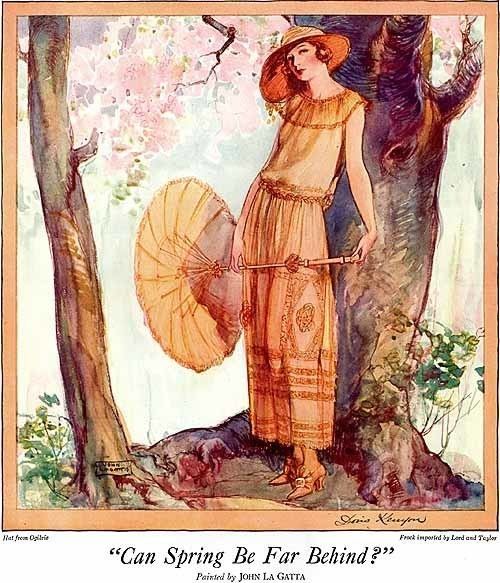 | ||
John La Gatta (May 26, 1894 – January 21, 1977), also spelled LaGatta, was one of the most famous illustrators of the first half of the 20th century. He excelled at making clothed women of glamour, grace and beauty look like they were wearing virtually nothing. His racy style was a hit with fashion and women’s magazines, as well as with advertisers.
Contents
- Early life
- Early career
- Later career
- Lavish lifestyle
- Illustration technique
- Move to California
- Death and legacy
- References

Early life
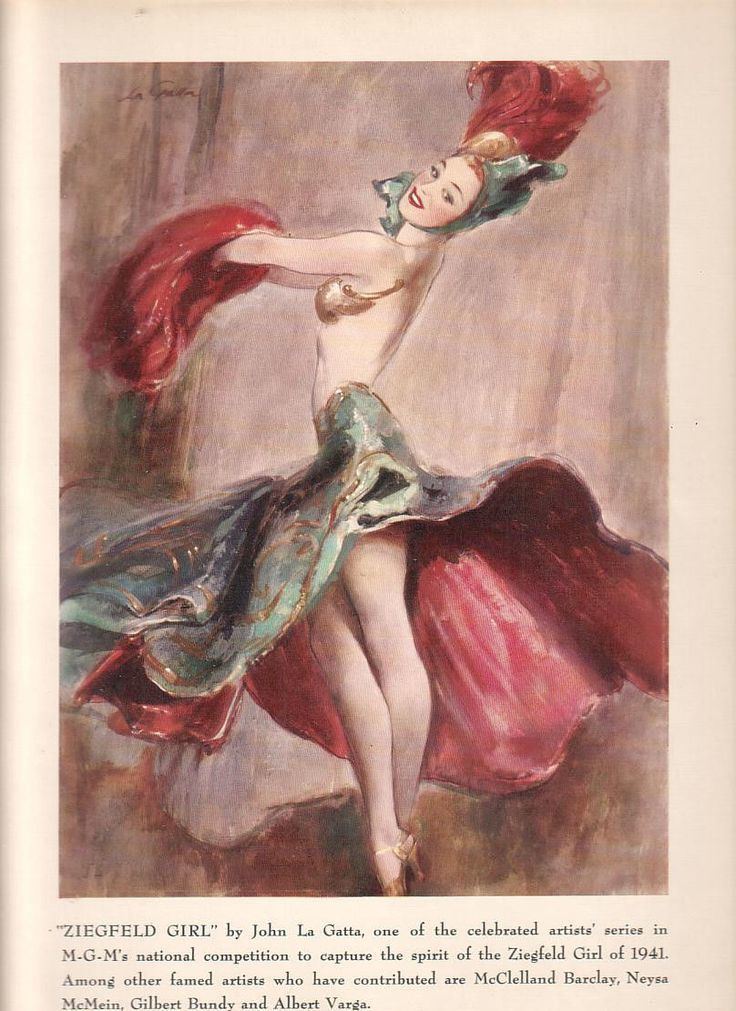
John La Gatta was born in Naples, Italy, the son of an educated father and a mother from an old and well-connected family which traced their origins back to the Count of Anjou, brother of King Louis IX of France. La Gatta was a sickly child. Around the age of four his mother died in childbirth. His father, a jewelry designer, left Italy and eventually emigrated to the United States.
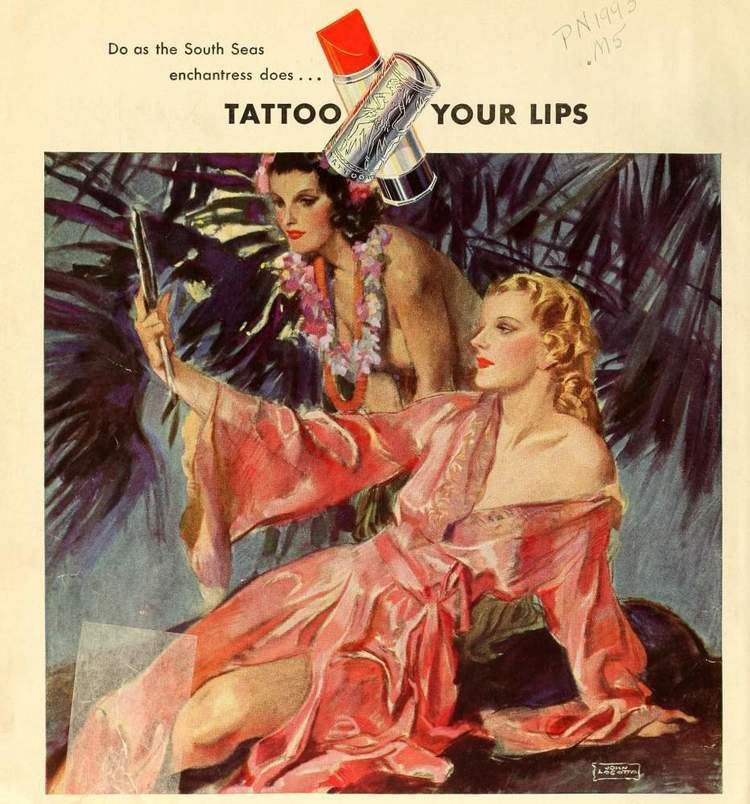
Growing up in New York city’s rough lower east side, La Gatta showed an early talent for art. In the fall of 1909, the 15-year-old enrolled in the New York School of Fine and Applied Arts (now Parsons School of Design) where he excelled at charcoal draftsman and the portrayal of form and motion. He studied under artists Kenneth Hayes Miller and Frank Alvah Parsons. La Gatta was selling sketches to Life magazine to pay for his formal education and after graduation he continued working for Life and doing advertising illustrations for N. W. Ayer, one of the nation's early and largest advertising agencies. His work from this period often showed everyday working life.
Early career
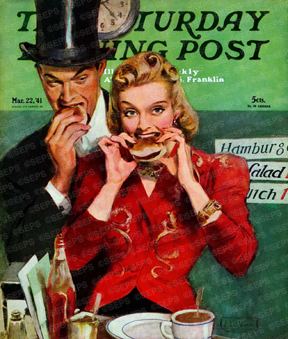
In 1914, La Gatta moved to Philadelphia to design film posters for Lubian Film Company. On the way to Chicago by train in 1916 to pursue a well-paying job, the 22-year-old got off on an impulse in Cleveland to meet with Nelson Amsden, who had been recruiting La Gatta. Amsden offered him a job at his advertising art studio on the spot and La Gatta immediately accepted. In Cleveland, he met and married Amsden’s cousin, beautiful Florence Eugenia Olds, an art student at the Cleveland School of Art. John and Florence were married just short of 60 years. They eventually had two children, son John Hawley Olds La Gatta, and daughter Jeanne Mehit (ne LaGatta).
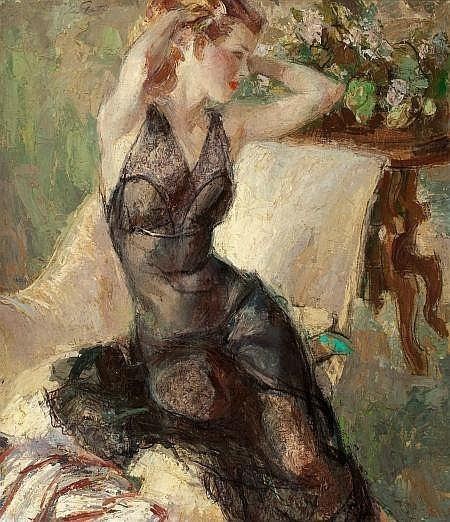
As the La Gattas prepared to leave on a honeymoon, they learned that Amsden’s business had failed and La Gatta’s accumulated wages were gone. An assignment from N. W. Ayer advertising agency of Philadelphia brought La Gatta back to New York City.
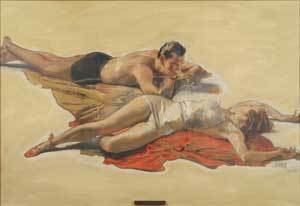
During this period, he did illustrations for Society Brand men’s work clothes, Blue Buckle overalls, and General Motors. La Gatta was concerned that he was considered an illustrator of working men when he wanted to paint beautiful women. He resigned from N. W. Ayer and spent six months creating a portfolio of paintings of women using his wife as the model.
Later career
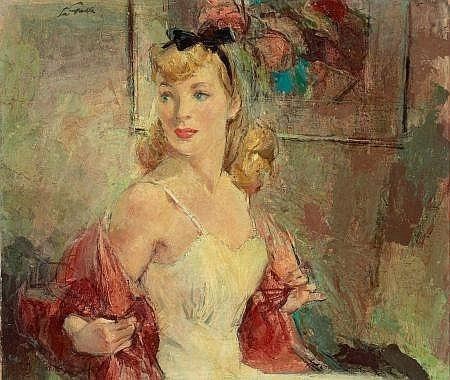
When he showed these to art directors, all the paintings sold and he was flooded with new commissions. Fellow illustrator Frederick R. Gruger, upon seeing La Gatta’s images of women, said he painted, “chrome-plated women.”
La Gatta’s advertising clients included Resinol soap, International Silver Company, Ajax Rubber Company, Laros Lingerie, Hoover vacuum cleaners, Paramount Pictures, Campbell’s Soup, Ivory Soap, Kellogg’s, Johnson & Johnson, Spaulding Swimwear, and Chase and Sanborn Coffee.
His most noted work was done for many of America's most prominent magazines including Ladies’ Home Journal, Cosmopolitan, Woman’s Home Companion, Redbook, McCall’s, and Harper’s Bazaar. He eventually painted twenty-two Saturday Evening Post covers. According to a post on The Saturday Evening Post web site, “His art was a window into a world of cool elegance most readers would not otherwise be aware of.”
La Gatta jointed the Guild of Freelance Artists, its membership also included Norman Rockwell, Charles Dana Gibson and Neysa McMein. He was a member of the Society of Illustrators from 1922 to 1939. And was the interim president in 1927.
Lavish lifestyle
During the 1930s, when the average income was $2,000 to $4,000 a year, La Gatta earned over $100,000 a year. He was so popular and had so many commission, he frequently had to turn away work. Though the Depression he earned more than the President of the United States.
His images of sophisticated, upper-class men and women dominated advertising into the 1940s and made him one of the most sought after illustrators in the country. He lived a lavishly lifestyle that mirrored the images he created.
In addition to a studio in Manhattan, he bought a house in Sands Point, New York, on the north shore of Long Island, and a home in Woodstock, New York. To get from Long Island to Manhattan, the handsome and dapper artist bought a forty-five-foot yacht and drove custom-made Packard Phaeton. The La Gatta’s kept servants, belonged to prestigious clubs and traveled in style.
During the Great Depression his paintings of glamorous, elegant women in rich, romanticized settings provided Americans an escape from reality. When the stock market crashed, LaGatta’s assets were well protected since he invested almost exclusively in real estate.
In 1937 the famous illustrator appeared in the Jack Benny movie Artists & Models along with fellow illustrators McClelland Barclay and Arthur William Brown, and cartoonists Peter Arno and Rube Goldberg.
Illustration technique
At the peak of his career in the 1930s, La Gatta often produced an illustration a day. W. Thornton “Pete” Martin, editor of The Saturday Evening Post, once commented, “I don’t see how it is humanly possible for you to deliver six pictures at once and still keep the quality of your work at its stratospheric La Gatta high.”
He worked almost exclusively on illustration board, drawing with charcoal. He then sprayed the drawing with fixative and over-painted with thin oil paint which allowed the charcoal lines to show through. He often finished a painting by adding color using a pallet knife to build texture.
La Gatta carefully chose his models and worked directly from life when he could, eschewing photography. He was a frequent judge of the Miss America pageant and found models there, as well as from model agencies, the theater, and women he met. He favored brunette; but was known for using a brunette, a blond, and a redhead in the same illustration. Once he found a model that met his standards of beauty, he often painted her for years. La Gatta would often have three models posing for different illustrations at the same time. As one would rest, he moved on to another.
Move to California
By the 1940s, La Gatta’s depictions of the sensual atmosphere of haute couture were no longer in demand. National magazines and advertisers began to use more photography. His own lavish lifestyle was in the past. He rented out the Sands Point house and moved to Woodstock.
Tiring of the cold winters, he decided to create a daily comic strip, Sally Forth, with California screenwriter Borden Chase. La Gatta moved his family to California in 1941. The strip was syndicated but La Gatta found it too time consuming and dropped the project.
In California he continued his advertising commissions. He created illustrations for Woodbury Soap and Largos Silk Lingerie. However, the income was not enough. La Gatta sold his yacht and turned to portrait painting. He continued to be plagued with health problems (he eventually has 17 stomach surgeries) and struggled financially.
In 1956 Edward A. “Tink” Adams, the founder of what is now the Art Center College of Design in Pasadena, California, hired La Gatta as an instructor. La Gatta was a demanding but popular taskmaster and many of his pupils went on to careers in illustration; including Bob Peak, Bart Forbes, Mark English, Charles McVicker, and Don Shaeffer the head of the famous Charles E. Cooper Studio.
Death and legacy
Since the college was a State of California institution, there was a mandatory retirement age of 75. John La Gatta taught his last art class in 1968, and was awarded an Honorary Degree of Doctor of Fine Arts. He continued to paint for shows and galleries but found the art market was increasing dominated by abstract art. He died on January 21, 1977 in Santa Monica, California. His wife Florence died in 1992.
In 1984 the Society of Illustrators posthumously inducted John La Gatta into its Illustrators Hall of Fame and in 2011 honored him as a Distinguished Educator in the Arts.
La Gatta’s son, John Hawley Olds La Gatta, graduated from the University of California, Berkeley and moved to New York City to start a financial career. In 1970 he founded Olds Securities Corporation (Olds was his mother’s maiden name). He moved to San Francisco, California, in 1990, then to Reno, Nevada, in 1996; where he founded the non-profit Catamount Fund the following year. John H.O. La Gatta died in Reno in 2015.
